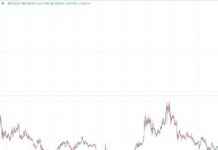Defi.money Enhances Interoperability with LayerZero Integration
In a move to strengthen its interoperability capabilities, the chain-agnostic stablecoin protocol defi.money has recently integrated LayerZero, a cutting-edge interoperability solution. This integration marks a significant milestone for defi.money, as it opens up new possibilities for omnichain liquidity within its network.
LayerZero, also known as ZRO, serves as a foundational layer for omnichain applications and blockchains. With its integration into defi.money, users can now access a seamless and efficient cross-chain transfer experience. This integration was officially announced by the LayerZero team on Sept. 26, highlighting the shared vision of both projects in advancing the decentralized finance landscape.
The key highlight of this integration is the implementation of the omnichain fungible token, known as OFT, within defi.money’s stablecoin MONEY. The OFT Standard enables cross-chain token transfers, allowing users to send, receive, and deploy assets across different blockchains. With this implementation, defi.money has successfully transitioned into a natively omnichain platform, offering unparalleled flexibility and accessibility to its users.
The Growing Importance of Stablecoins in the Web3 Ecosystem
Stablecoins have emerged as a critical component of the web3 ecosystem, providing a reliable and stable store of value for users within the decentralized finance space. The rise of stablecoins has been fueled by the increasing demand for digital assets that maintain a stable value while still offering the benefits of blockchain technology.
Cross-chain transfers have played a pivotal role in driving the adoption of stablecoins, enabling users to seamlessly move assets across different blockchains. This interoperability has significantly enhanced the liquidity and utility of stablecoins, making them an essential tool for decentralized finance applications.
As of Sept. 26, 2024, the stablecoin market is valued at over $173 billion, with Tether (USDT) and Circle’s USD Coin (USDC) leading the pack. Tether remains the largest stablecoin by market cap, with over $119 billion in circulation, followed by USD Coin with a market cap exceeding $36 billion. However, emerging players such as First Digital USD (FDUSD) and PayPal USD (PYUSD) are also gaining traction in the market.
Exploring New Horizons in Stablecoin Innovation
Innovations in the stablecoin space are not limited to existing players, as new entrants are continuously pushing the boundaries of what is possible with digital assets. Ripple, known for its XRP token, has recently ventured into the stablecoin market with RLUSD, a stablecoin pegged to the US dollar. Ripple’s decision to test RLUSD on the Ethereum and XRP Ledger showcases the company’s commitment to exploring new opportunities in decentralized finance.
BitGo, a prominent crypto custodian, is also exploring the development of a dollar-backed stablecoin, further expanding the options available to users in the stablecoin market. Additionally, reports suggest that U.K.-based digital bank Revolut is considering similar plans to introduce its own stablecoin, adding to the growing diversity within the stablecoin ecosystem.
The integration of LayerZero into defi.money’s stablecoin protocol represents a significant step forward in advancing the interoperability and accessibility of stablecoins within the decentralized finance space. With a focus on omnichain liquidity and cross-chain transfers, defi.money is well-positioned to cater to the evolving needs of users in the rapidly expanding web3 ecosystem.









